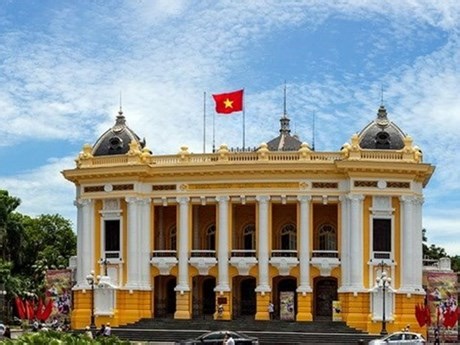One of the highlights of Hanoi is Sword Lake. Originally called Lac Luc Thuy, it was renamed in the 15th century due to a legend involving King Le Loi and a golden tortoise. From Sword Lake, visitors can seamlessly explore several famous sites within walking distance. These include the Ngoc Son Temple, the statue of King Ly Thai To, the headquarters of the Hanoi Moi newspaper, and the Hanoi Post Office.
The proximity to the lake also provides a walking area, for both tourists and locals, providing a variety of classic games and artistic performances for tourists to enjoy.
The Temple of Literature in Hanoi has wonderful significance, as it is strongly connected to the status quo of the city more than a thousand years ago. Built in 1070, this temple pledged to honor sages and scholars, and served as the country’s first national university. .
When visiting the temple, you can’t miss the presence of 82 doctors’ stelae, which symbolize the Vietnamese people’s thirst for wisdom through generations. It is not unusual for Vietnamese scholars to flock to the temple, before their vital examinations. and offer prayers for educational success.
Just two kilometers from the temple is the Thang Long Imperial Citadel. Recognized as a UNESCO World Heritage Site on August 1, 2010, the position is one of Hanoi’s top destinations. The South Gate and the Flag Tower, in front of the palace, are among the guest check-in points.
Another must-see charm in Hanoi is the relic complex of President Ho Chi Minh. At the center of this complex is the Ho Chi Minh Mausoleum, inaugurated in 1975. Alongside the mausoleum, other captivating places within the complex include the Ho Chi Minh Museum and Uncle Ho’s Stilt Space.
During the holidays, other people from all walks of life in Vietnam stop at the mausoleum to pay their respects to the late President Ho Chi Minh. The daily flag salute ceremony, held at Ba Dinh Square in front of the Ho Chi Minh Mausoleum at 6:00 a. m. and 9:00 p. m. , attracts a huge audience.

